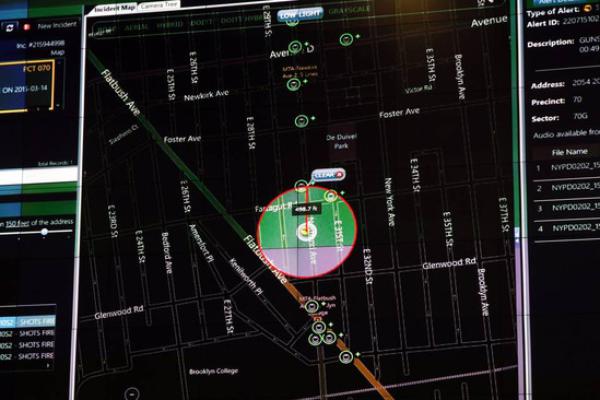According to foreign media reports, New York, London and other metropolises have set up rapid response elite teams. But the question is: how can the authorities know as quickly as possible what is happening? One potential solution is to use techniques like ShotSpotter, which helps pinpoint the exact location of gunshots and explosions. In the United States, the nature of the 911 call system can make it much later to learn about a paris-style attack.

ShotSpotter gunshot detection system
First, those closest to the scene are least likely to call for help because they are likely to be busy running away and seeking cover. Those calling for help may not know the exact location or nature of the attack because they are on the move. The mechanism of the 911 call system itself also causes delays -- dispatchers have to ask for specific information from panicked callers.
But Ralph Clark, President and CEO of SST, says there is a better solution. For nearly 20 years, his company has been perfecting a technology called ShotSpotter. The technology has been used in 90 towns and suburbs around the world. It USES internet-connected microphones to triangulate the location of a shooting or explosion.
'We were able to pinpoint exactly where the outdoor shooting was taking place,' clark said. He added that while traditional methods take several minutes to determine the location of an attack, ShotSpotter gives authorities 30 to 45 seconds to know where the first shots were fired.
At the moment, ShotSpotter can only be used to cover high-crime areas, given the cost of deploying it. But Mr. Clark notes that ShotSpotter will soon be able to cover all areas of a city, thanks to smaller equipment and lower manufacturing costs, as well as a recent partnership with general electric.
A key part of the scheme is street lighting. Ge has been pushing its 'smart city' devices, which it says include sensors to track traffic, air quality and other issues, as long as cities upgrade old street lights to leds, saving on electricity and bulb replacement costs.
When ShotSpotter first started talking to ge, Mr. Clark says he was surprised that the company's smart street lights had everything needed to use ShotSpotter's sensors -- without using ShotSpotter's software and cheap speakers. 'Ordinary European cities don't normally see shooting violence, but they are increasingly worried about a mumbai-style attack.'
ShotSpotter operates through continuous monitoring, using machine-learning algorithms to distinguish between gunshots and ambient noise. Once at least three sensors receive a certain beep, specific time and location data is sent to the cloud server, which can then be used to determine the exact source of the beep.
As a result, the technology, originally designed to help police respond to and reduce gun violence in us city centres, is now expected to be widely deployed around the world to deal with different types of gun violence.
'We can't prevent a mumbai-style attack with this technology, but what we can do is provide alerts very quickly and accurately to mitigate the impact of the shooting,' clark said. He calls the system a 'shooting alarm.'